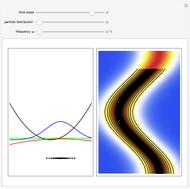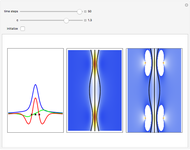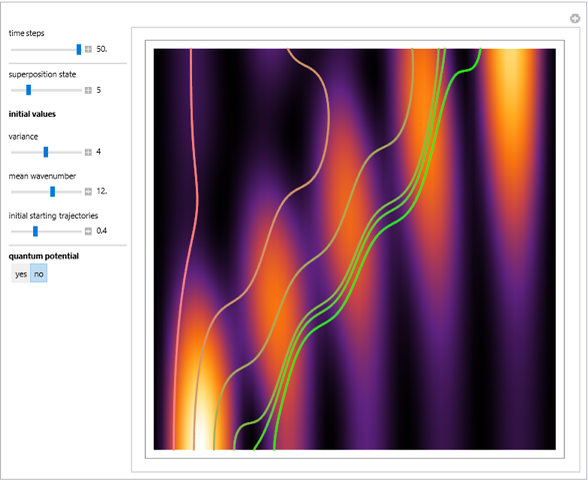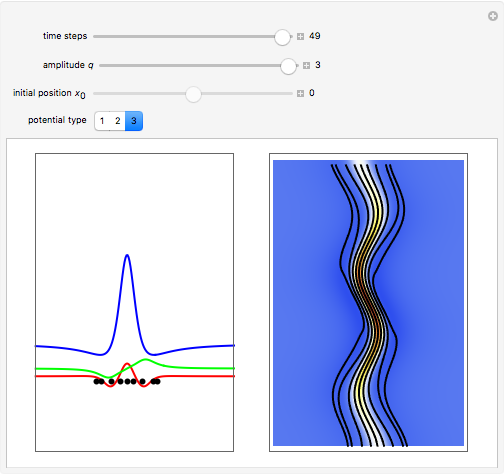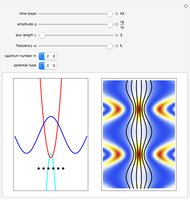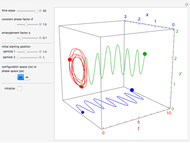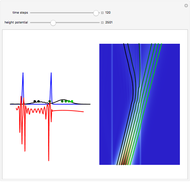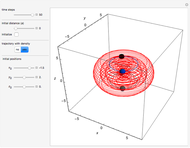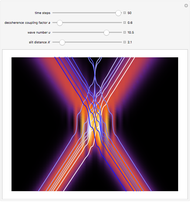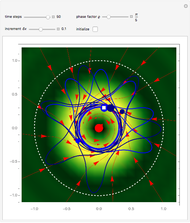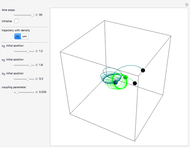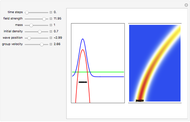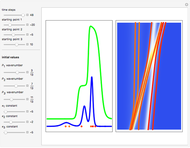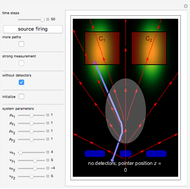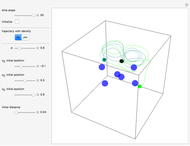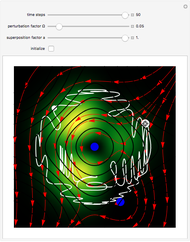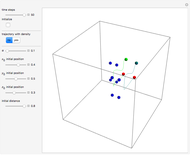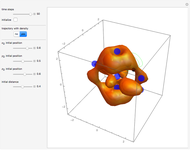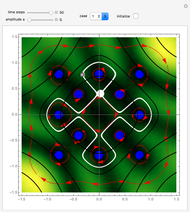The Caged Anharmonic Oscillator in the Causal Interpretation of Quantum Mechanics

Requires a Wolfram Notebook System
Interact on desktop, mobile and cloud with the free Wolfram Player or other Wolfram Language products.
This Demonstration studies the caged anharmonic oscillator—fundamental for quantum field theory as well as many-body theory—in the causal interpretation of quantum mechanics developed by David Bohm. Among the large number of possible potentials for the Schrödinger equation, only a very few are analytically solvable. The potential  is that of the harmonic oscillator
is that of the harmonic oscillator  with rational frequency ratio, but additionally with a barrier term from inclusion of a repulsive force
with rational frequency ratio, but additionally with a barrier term from inclusion of a repulsive force  [1].
[1].
Contributed by: Klaus von Bloh (July 2012)
Open content licensed under CC BY-NC-SA
Snapshots
Details
The simplified Schrödinger equation is:
 , with
, with  , and so on, where
, and so on, where  is a complex-valued function and
is a complex-valued function and  are real-valued constants. Here the common standard notation is used, where
are real-valued constants. Here the common standard notation is used, where  is the time and
is the time and  is the spatial coordinate. The time-dependent unnormalized solution gives the wavefunction:
is the spatial coordinate. The time-dependent unnormalized solution gives the wavefunction:
 ,
,
where  are the associated Laguerre polynomials and the quantized energy is given by
are the associated Laguerre polynomials and the quantized energy is given by  where
where  is an integer. For simplicity, the parameters
is an integer. For simplicity, the parameters  and
and  are set equal to 1 in the quantum potential. If
are set equal to 1 in the quantum potential. If  , then the wave density is time independent and the particles are at rest. The guiding equation for the particle velocity is
, then the wave density is time independent and the particles are at rest. The guiding equation for the particle velocity is  , which is calculated from the gradient of the phase from the total wavefunction in the eikonal form
, which is calculated from the gradient of the phase from the total wavefunction in the eikonal form  . The quantum potential
. The quantum potential  is given by
is given by  . Due to limitations of CPU power, AccuracyGoal, PrecisionGoal, and MaxSteps are decreased. The starting positions of the particles are linearly distributed around the peaks of the wave density at
. Due to limitations of CPU power, AccuracyGoal, PrecisionGoal, and MaxSteps are decreased. The starting positions of the particles are linearly distributed around the peaks of the wave density at 
Reference
[1] N. W. Evans and P. E. Verrier, "Superintegrability of the Caged Anisotropic Oscillator," Journal of Mathematical Physics, 49(9), 2008 pp. 092902–092902-10. dx.doi.org/10.1063/1.2988133 or arxiv.org/abs/0808.2146.
Permanent Citation








